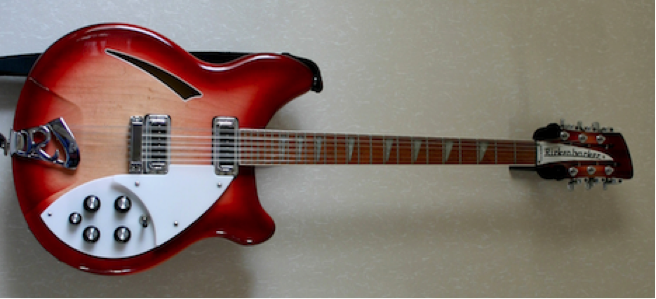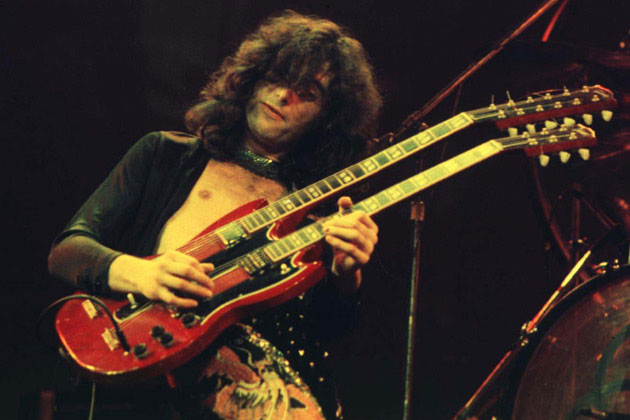5. Trends and Evolution

The
changes on songwriting that followed the emergence of “guitar
oriented rock” in turn prompted further innovation in technique and in
style.
Up until the seventies guitar soloing and fills were rooted in the
blues and country music - the music of the rural south. As I said
earlier - the techniques were there all along - players just used
volume, a few basic effects such as reverb and distortion, enhance
them.
Then other innovations and explorations appeared.
To me one of the more interesting was the way U2’s The Edge avoided the
traditional blues based licks on solos and fills and instead used
alternate chord structures to create a backdrop for their songs. He
seemed to reject the whole notion of traditional and extended
improvised guitar soloing over standard guitar rhythms. And while
otters guitarist were using delays and echos mainly to enhance solos
and riff, he was using them in new ways - as part of the essential
backdrop to the song.
The other innovation, happening at about the same time was the
development of new techniques that kept the sound of the guitar
evolving. Eddie Van Halen was the leader of this revolution.
Innovations in guitar construction such as locking tuners allowed for
more pronounced use of the vibrato. The Fender Strat featured a vibrato
bar that let the player bend notes up and down - but if you overdid it
the guitar would not snap back into tune. Watch Jimi Hendrix in old
concert footage. Now players could now use the vibrato to bend notes up
and down at will.
Eddie’s creative use of the new feature along with the technique of
using the fingers on what would normally be his picking hand to tap the
frets to sound notes gave his solos a new dimension.
For all the obvious differences in the playing and the song structures
between Van Halen and U2 there was a curious similarity. Both rejected
the traditional Rhythm Guitar / Lead Guitar format where the rhythm
guitar track was straight strumming and the lead added melody.
Both seldom relied on traditional use of chords and instead used parts
of chords mixed seamlessly with individual notes and groups of notes.
12 String Guitars
One day in 1965, about the time that I was trying to figure out how to
play pop songs on my new electric guitar, I heard the Byrds’ Mr.
Tambourine Man on the radio. I didn’t know that much about guitar, but
I knew enough to wonder how they got that sound in the iconic
intro. I certainly couldn’t get any sound like that out of my
Sears Silvertone and matching amp.
It was some time before I learned the secret. Google was a long way in
the future and my small town library had no relevant information.
It turns out that the idea of doubling each of the six strings on a
guitar with matching strings, most of them tuned an octave above their
companions was not an new idea at all. Folk players had been using
acoustic 12 strings for some time, before that idea was translated to
the electric guitar, and then, again after some time, guitar players
found innovative ways to make use of the idea.
In this case perhaps it was a case of “if you build it they will come.”
On one of the Beatles’ first visits to the United States, a
representative of the Rickenbacker Corporation, presented George
Harrison with one of their new lines of 12 string guitars. It looked
like this…

George figured out just what to do with it, in songs like a Hard Day’s
Night, but I just hadn’t noticed until Roger McGuinn’s threw it right
into my face, at a time when I was just learning enough to be able to
hear it.
That sound echoes through quite a few hits of the mid and late sixties,
and keeps coming back over the intervening decades. Tom Petty loved
that sound (and loved the Byrds). He used it to good effect on one of
his early songs, “Listen to Her Heart” and the cover of Damn the
Torpedoes features him holding a Ric, but his use of it in the intro of
“The Waiting” is one of the all-time great uses of that sound.
Speaking of design innovation…what if you recorded a song with a
prominent electric 12 - string component and equally essential 6 -
string riffing and soloing, and needed a way to do that live. Two
guitars in one. Led Zeppelin just couldn’t perform Stairway To
Heaven without the double-neck Gibson.
 Jimmy Page
pretty well embodied the evolution of guitar playing as
theatre.
Jimmy Page
pretty well embodied the evolution of guitar playing as
theatre.
Other Trends that changed the nature of R&R guitar.
Once the dominance of the guitar was established, and the techniques
refined and tweaked, there was the inevitable reaction and response.
Perhaps the first was the re-introduction of Rock's country roots and
the birth of Country Rock. Creedence Clearwater Revival explored those
roots and John Fogerty's guitar playing introduced country licks with a
bite.
The Eagles smoothed it out and built their career on it.
In the 70's the Punk movement sought to take rock and take guitar back
to its simpler format - with less technique and more energy. But the
guitar was still front and centre and it was still loud and distorted.
Metal went in the other direction. Technique and speed were the focus.
As I've already said, Ritchie Blackmore's work was ground breaking.
Check out the speed picking in the solos to Highway Star and
Burn.
Keyboards had always been part of the rock n' roll mix and the best
bands found ways to have them compliment and interact with the guitar.
But the introduction of the synthesizer gave rise to bands with less
emphasis on guitar.
Then there were the determined efforts of 80's hair bands to take rock
n' rock back to pop. Gone were the jeans and T-shirts, hair spray
became a thing, and costumes went Hollywood. The songs veered back
towards a radio – friendly format. Whereas Led Zeppelin could get rich
and famous before even scoring a radio hit, I think Bon Jovi needed the
radio hit. I bought my first Led Zeppelin LP before I heard them on the
radio. FM Radio / Album Oriented Rock playlists gave a voice to
bands that focused on albums rather than singles. But underneath all
that hair there was still some pretty good guitar playing.
Back to Basics
When I saw Pearl Jam in the early 1990's they closed their show with
“Baba O’Riley" by the Who and Neil Young's “Keep on Rockin'
In the Free World”. To me, those choices, along with the feel of their
recent album, "Ten", signalled a respect for the past that seemed to be
missing in the songs of a lot of popular bands at the time.
Bands like Nirvana and others later associated with "Grunge" were less
inclined to reference the past.
Canada's Tragically Hip on the other hand made no secret of their love
for the Stones and were masters of that two-guitar - heavily rhythmic
sound. In a world where Pop music was overtaking Rock they were
pressing on, and they were very influential.
Today and Tomorrow...
As we work our way past 2020 what does the future hold? Greta Van
Fleet, a young band out of Wisconsin is unabashedly channelling Led
Zeppelin and some critics are quick to point out their shortcomings.
Slash on the other hand reminded us that it is bands like that are the
only hope for keeping Rock alive.
Across the continent, and I suspect, around the world there are
countless bands and countless guitar players playing music that
embodies rock and roll roots. They're not often heard on the radio, but
they have fans, they tour, they appear on Austin City Limits. They
aren't mainstream, the way that Foreigner and U2 were. They will not
likely win a Grammy or appear on Billboard's Top 100.
Their musical preference, once at the forefront of popular music, now
joins the ranks of other genres that had their moment in the sun.
As to being at the forefront of popular culture - well, we had a good
run.
|
 |
 |
|